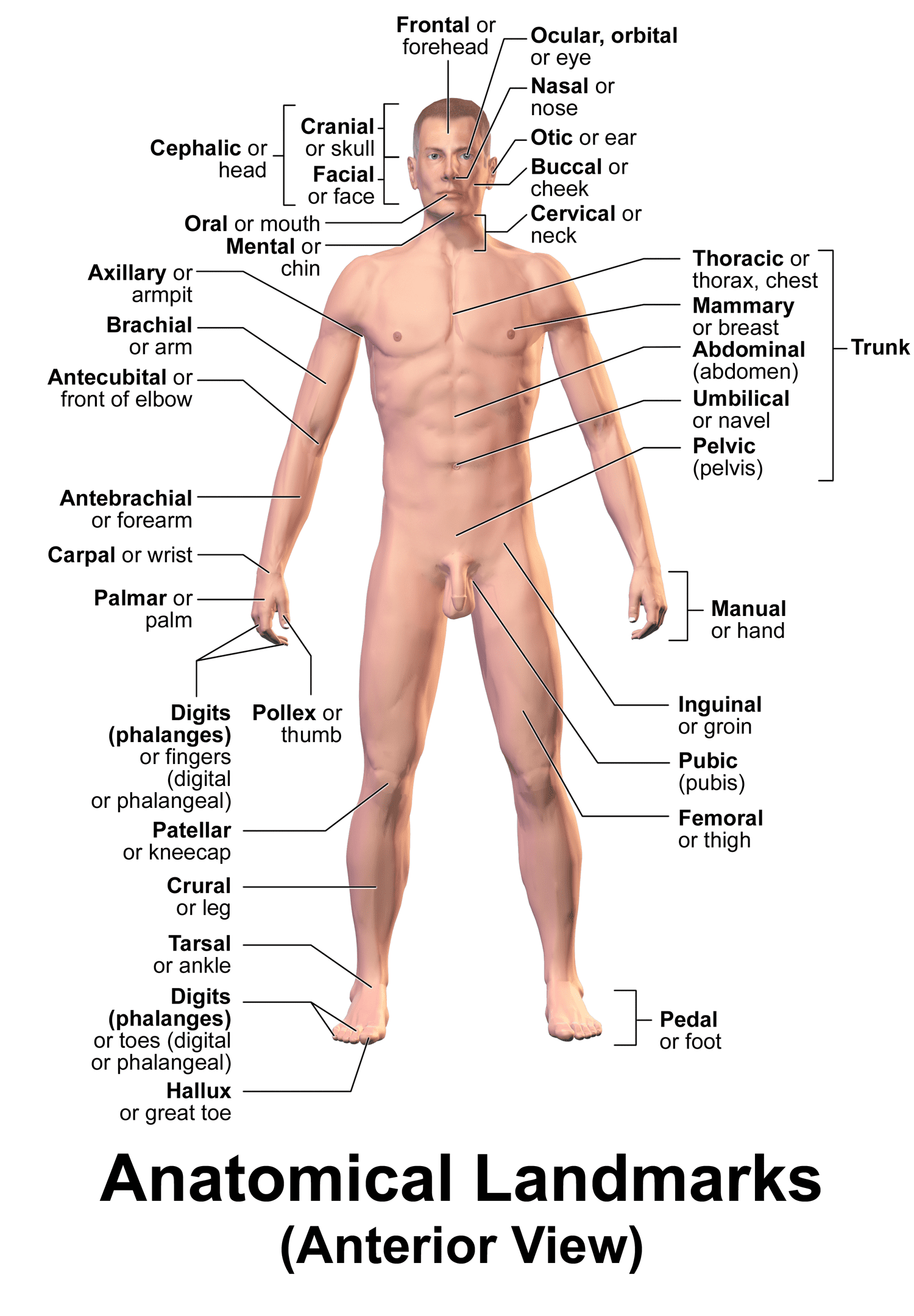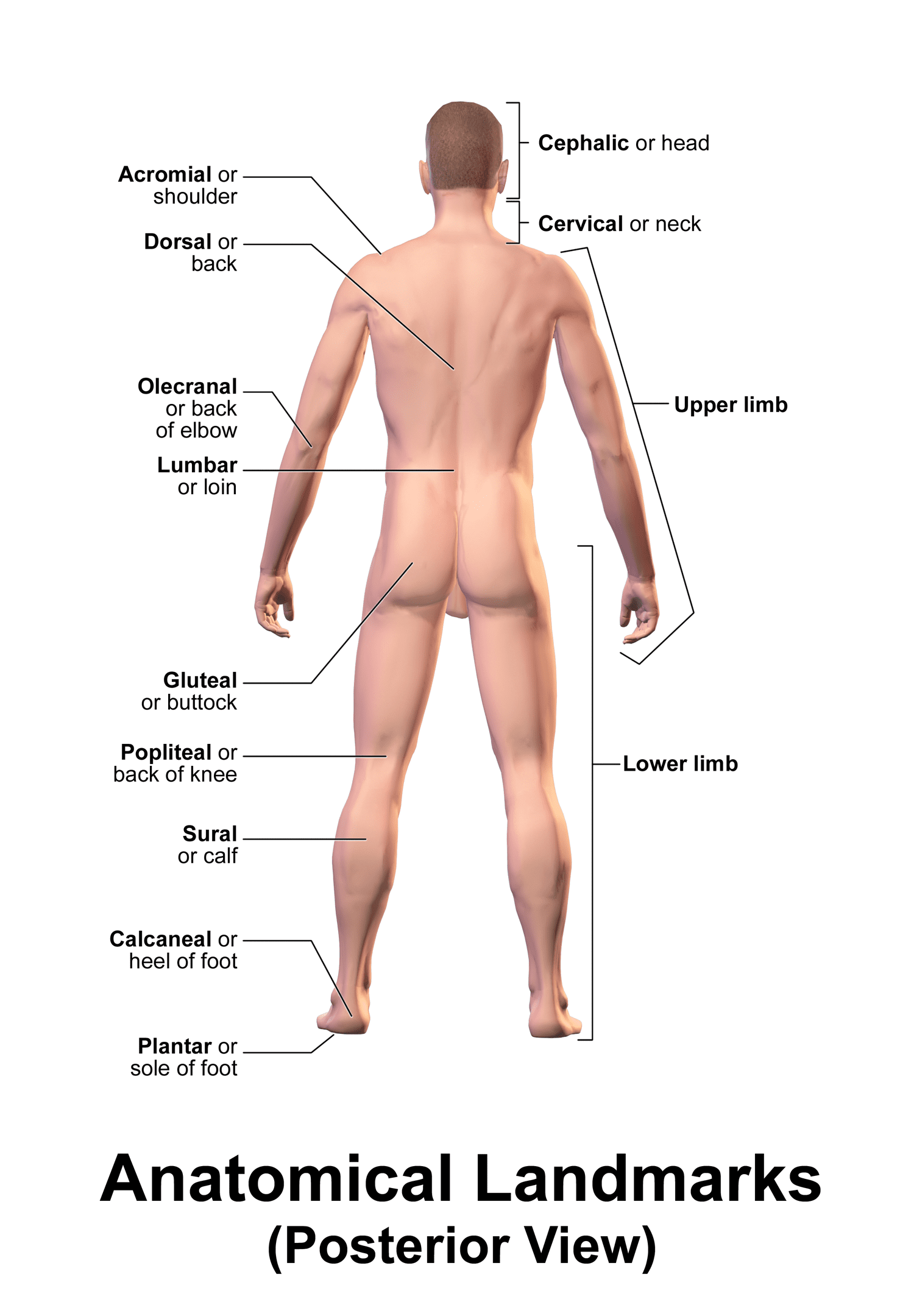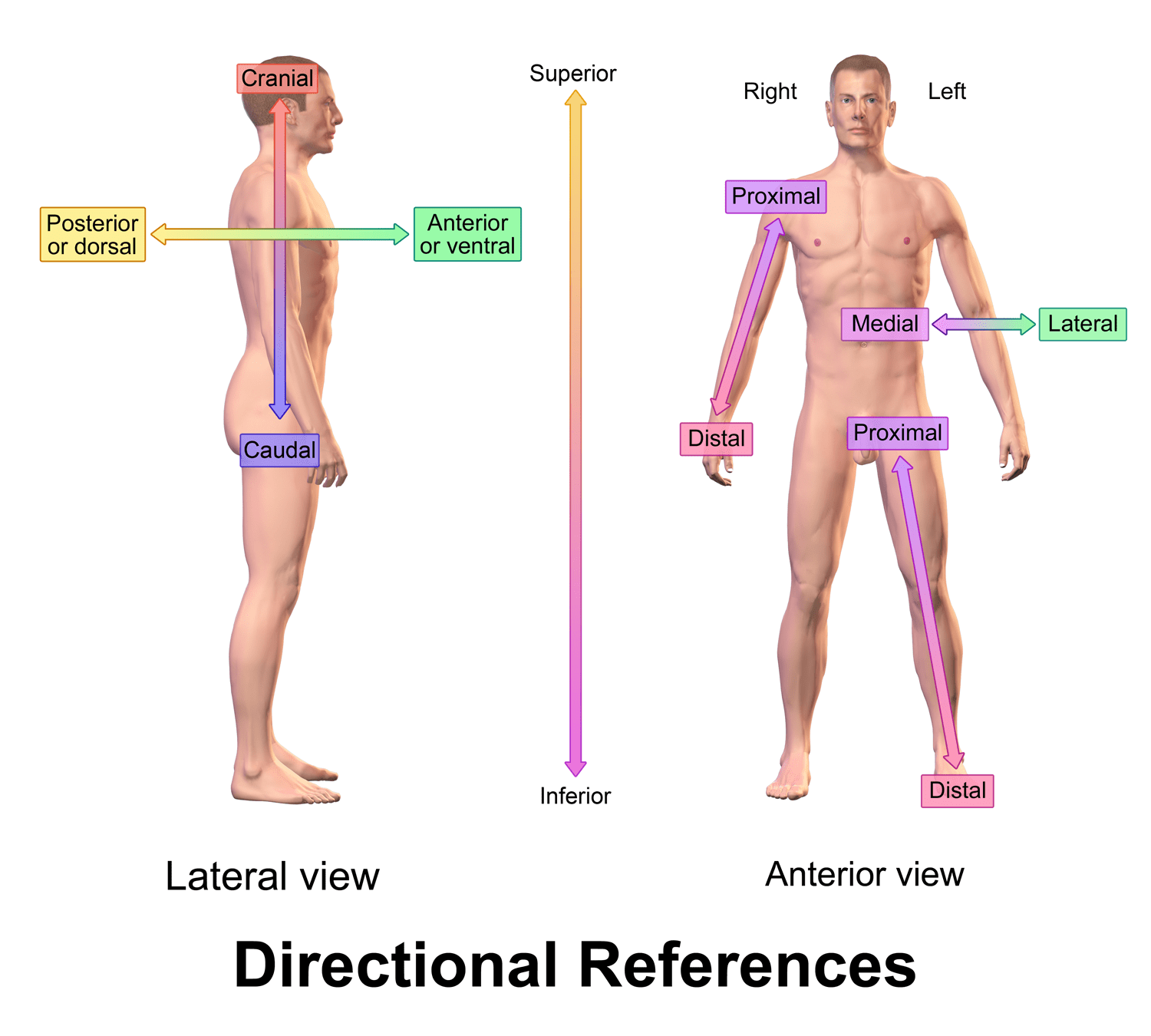Welcome to Lesson 1 on an Introduction to Human Anatomy and Physiology
Introduction to Anatomy and Physiology
Lesson Goals
By the end of this lesson you will be able to:
1. Define the study of anatomy and physiology
2. Identify anatomical position
3. Identify the major divisions of the human body
4. Identify anatomical terms represented parts of the body
5. Identify anatomical directional terms
Vocabulary
Anatomy-the study of the structures of the body
Physiology-the study of the function of the body
Body Cavity-hollow area of the body containing organs
Regional Term-term describing a specific part of the body
Positional Term-term used to describe a specific location of a body structure
Introduction
Welcome to the fascinating world of human anatomy and physiology. The human is the ultimate living system on our planet. Your body is literally packed with complex systems working in harmony to keep you alive.
Anatomy is the study of the structures of the body and Physiology is the study of how these structures work, or the function of the body.
Here are some cool facts about the human body:
Your body has on the order of 10 trillion cells.
Every second your body is producing 15 million red blood cells.
Your nervous system can transmit impulses as fast as 450 miles per hour.
During an average lifetime the heart beats about 2.5 billion times.
In one day, your blood travels nearly 1000 miles.
Anatomy and physiology are the cornerstones for nearly all health professions, especially nursing. But before we get into learning about the body let’s go over some strategies for success in this course.
Watch the videos first for an overview of each section. The videos are short but contain a lot of information. Feel free to watch these as many times as you wish and use pauses and note taking to help understand the more difficult sections.
Use anatomical terminology as often as possible. The language of anatomy is quite foreign to some students and it takes a good deal of practice to feel comfortable pronouncing and using the terms. One way to practice is to simply use the terms by making up sentences. For example, you could say that your arm and wrist includes the brachial, antebrachial and carpal regions.
Form small study groups. Study groups are a great way to practice terms and concepts. Small groups are much better than larger groups because they tend to stay more focused. One of the worst study groups I have been involved in consisted of 8-10 students. The group could not stay focused and a lot of time was lost. The best situation is to have a study partner or perhaps two other people besides you.
Study in smaller time periods more frequently. Repetition is a key to learning anatomical structures. It is better to study in smaller time periods than one or two long study sessions right before an exam.
Basic Concepts
The human body can be divided into two basic sections. The axial section contains the head, neck, and trunk. The appendicular section contains the arms and legs, also known as the upper and lower extremities.
The body also contains hollow areas called cavities. There are 2 large cavities. One cavity is in the front part of the body and is called the ventral cavity. The other is in the back and is called the dorsal cavity. Both cavities can be subdivided into smaller cavities. The ventral cavity can be subdivided into the thoracic and abdominopelvic cavities. The thoracic portion is in the chest area and the abdominopelvic portion is in the stomach area. The thoracic and abdominopelvic cavities are separated by a structure known as the diaphragm. The dorsal cavity can also be subdivided into 2 smaller cavities. One cavity is called the cranial cavity and is located in the head. The other is called the spinal canal and runs down the back. The cranial cavity contains the brain and the spinal canal contains the spinal cord.
There are also some smaller cavities in the body. These include:
- Oral (teeth, tongue)
- Nasal (sinuses)
- Orbital (eyes and associated muscles, nerves)
- Middle ear (middle ear bones)
Anatomical Terminology
Now that we are a little familiar with the overview of the body, let’s get into some anatomical terminology. We’ll start with learning the anatomical terms for the parts of the body. In anatomy we always reference the body regarding anatomical position.
In anatomy body parts have special names that differ from common names. In other words, in anatomy the kneecap is called the patella. It will take some practice to get used to these anatomical terms.
Anatomical Regions
| Common Term | Anatomical Term | Region |
| Foot | Pes | Pedal |
| Shin | Crus | Crural |
| Calf | Sura | Sural |
| Front of knee | Patella (knee cap) | Patellar |
| Back of knee | Popliteus | Popliteal |
| Thigh | Femoris | Femoral |
| Groin | Inguina | Inguinal |
| Butt | Buttock | Gluteal |
| Stomach | Abdomen | Abdominal |
| Low Back | Lumbus | Lumbar |
| Chest and Middle back | Thorax | Thoracic |
| Lateral chest | Pectorus | Pectoral |
| Middle chest | Sternum | Sternal |
| Neck | Cervicis | Cervical |
| Chin | Mentum | Mental |
| Head | Cephalon | Cephalic |
| Shoulder | Acromion | Acromial |
| Arm | Brachium | Brachial |
| Elbow (front) | Antecubitus | Antecubital |
| Elbow (back) | Olecranon | Olecranal |
| Wrist | Carpus | Carpal |
| Hand | Manus | Manual |
| Forearm | Antebrachium | Antebrachial |
Positional Terms
We use positional terminology in order to specify locations of anatomical structures. The positional terms usually go in pairs. For example, superior and inferior go together. Superior means above and inferior means below. So, we could write a statement stating that the head is superior to the chest or to be more specific—the cephalon is superior to the thorax.
AND
The reverse would also be true:
The thorax is inferior to the cephalon.
Here are some other terms:
Anterior means towards the front.
Posterior means towards the back.
Ex: the sternum is anterior to the heart…
OR the heart is posterior to the sternum.
Medial means toward the midline of the body.
Lateral means away from the midline.
Ex: the ears are lateral to the nose
And…
The nose is medial to the ears.
Proximal means towards the trunk of the body.
Distal means away from the trunk.
Proximal and distal are usually used when describing structures in the extremities.
Ex: the elbow is proximal to the wrist.
The wrist is distal to the elbow.
Superficial means toward the surface.
Deep means under the surface.
Ex: the skin is superficial to the stomach.
The stomach is deep to the skin.
Ipsilateral means on the same side.
Contralateral means on the opposite side.
Ex: the right shoulder and elbow are ipsilateral.
The right shoulder and left elbow are contralateral.
Study anatomical position in the image below:

Study the body cavities in the image below:

Study anatomical terms in the images below:

Blausen.com staff (2014). “Medical gallery of Blausen Medical 2014”. WikiJournal of Medicine 1 (2). DOI:10.15347/wjm/2014.010. ISSN 2002-4436.

Blausen.com staff (2014). “Medical gallery of Blausen Medical 2014”. WikiJournal of Medicine 1 (2). DOI:10.15347/wjm/2014.010. ISSN 2002-4436
Study positional terms in the image below:

Blausen.com staff (2014). “Medical gallery of Blausen Medical 2014”. WikiJournal of Medicine 1 (2). DOI:10.15347/wjm/2014.010. ISSN 2002-4436.

